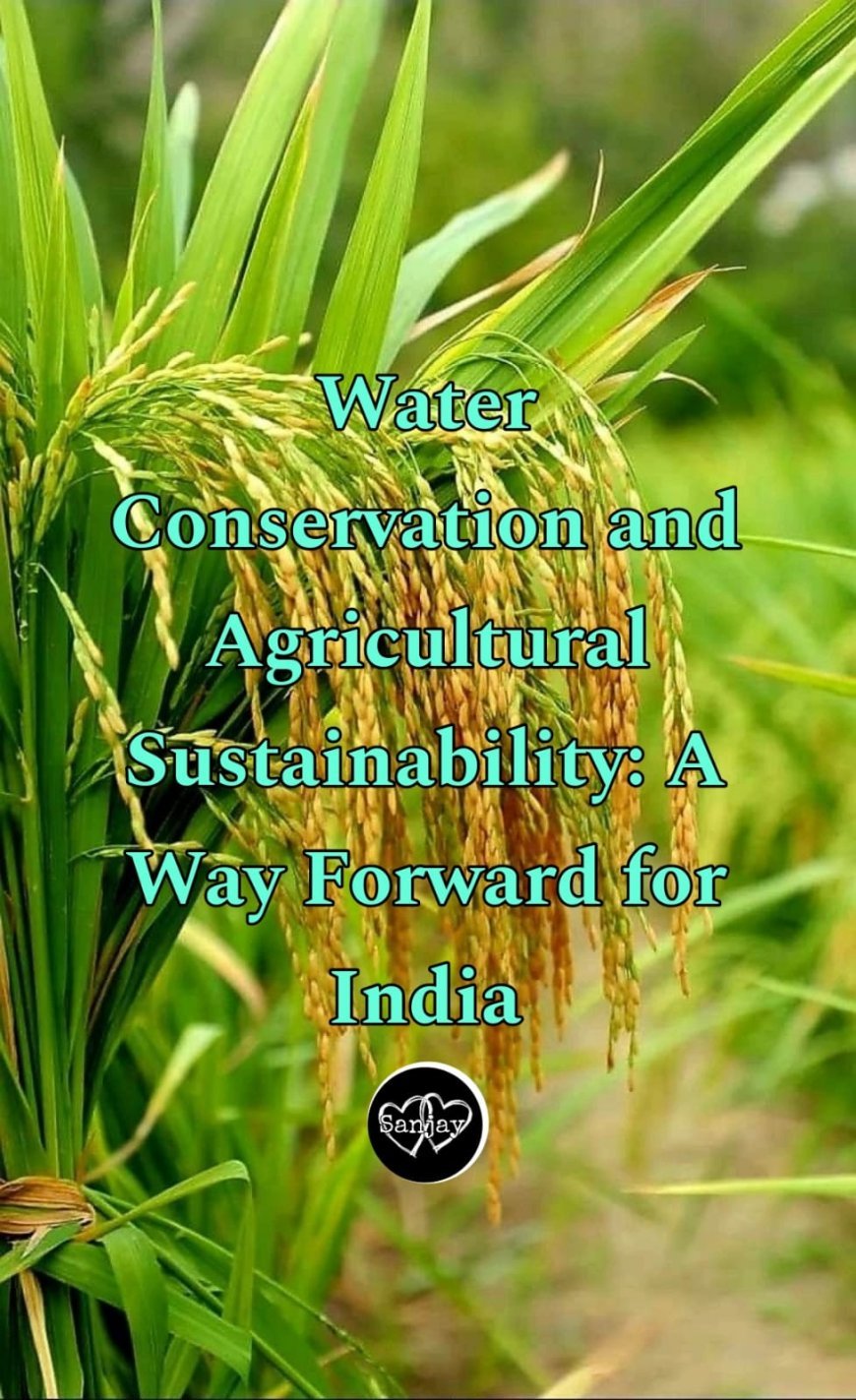Water Conservation and Agricultural Sustainability: A Way Forward for India

Sanjay Pattnayak
Sundargarh
Agriculture in India has long been described as a "gamble in monsoon," a phrase that aptly captures the precariousness of farming in a nation heavily reliant on unpredictable rainfall. Over the last decade, this gamble has become increasingly perilous due to scanty rainfall during the monsoon and unseasonal downpours that exacerbate crop damage. The result has been devastating: losses amounting to crores of rupees and a tragic rise in farmer suicides. These challenges underscore the urgent need to adopt sustainable agricultural practices and effective water management strategies.
The Imperative for Water Conservation
India’s agriculture is predominantly rain-fed, with about 60% of the cultivated area lacking assured irrigation. This dependence on rainfall makes crops vulnerable to droughts and floods. Conservation of water is no longer a choice but a necessity to mitigate the impacts of erratic weather patterns. One promising solution is rainwater harvesting, which involves collecting and storing rainwater for future use. This method can help ensure a steady water supply for agricultural needs, particularly in regions with limited access to irrigation.
In addition to harvesting rainwater, rejuvenating water bodies such as ponds, lakes, and reservoirs is essential. These water bodies play a critical role in recharging groundwater and maintaining ecological balance. Government and community initiatives should prioritize the restoration of these resources to bolster water availability for irrigation.
Diversifying Crops: A Shift in Focus
The traditional focus on paddy cultivation in kharrif season, particularly in eastern part of India which is highly water-intensive, needs reconsideration. Diversification into mixed cropping, floriculture, millets, cash crops, and seasonal vegetables can reduce dependency on water and enhance farmers' income. Millets, for instance, are drought-resistant and nutritionally rich, making them an ideal alternative for regions prone to water scarcity.
Floriculture and the cultivation of cash crops like sugarcane, cotton, and spices can also provide higher returns and open avenues for export. Seasonal vegetables offer the advantage of shorter growing cycles and adaptability to varying climatic conditions, ensuring farmers a steady income.
Enhancing Irrigation Infrastructure
Improved irrigation facilities are pivotal for increasing agricultural productivity. Traditional methods such as canal irrigation need modernization to reduce water wastage. Drip and sprinkler irrigation systems, which provide water directly to the plant roots, can significantly enhance water use efficiency. Moreover, promoting community-based irrigation projects can ensure equitable water distribution and reduce conflicts over resources.
Addressing the Root Causes
While infrastructural improvements and crop diversification are crucial, addressing the socio-economic challenges faced by farmers is equally important. Financial literacy, access to affordable credit, crop insurance schemes, and minimum support prices (MSPs) can reduce the financial burden on farmers and safeguard their livelihoods.
Role of Policy and Community Participation
The government must play a proactive role in implementing policies that prioritize water conservation and agricultural sustainability. Public-private partnerships can bring in much-needed innovation and investment in irrigation technologies and water management practices. Simultaneously, community participation in water conservation initiatives can foster a sense of ownership and accountability.
Conclusion
India's agricultural sector is at a crossroads, facing challenges that threaten the livelihoods of millions of farmers. By conserving water, diversifying crops, rejuvenating water bodies, and improving irrigation infrastructure, we can build a resilient agricultural system capable of withstanding climatic uncertainties. This collective effort, supported by robust policies and active community involvement, will not only secure the future of Indian agriculture but also ensure food security for the nation.








































